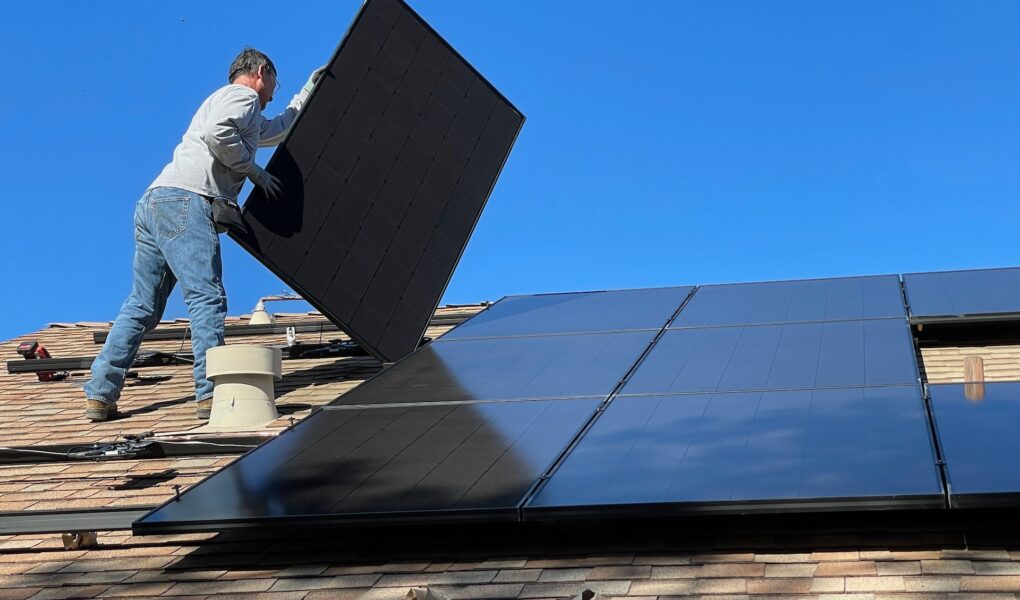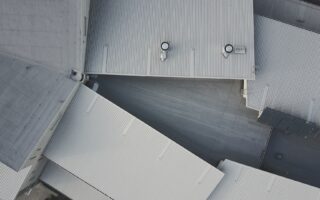Electricity-generating solar panels installed on the roof of a building makes the roof of that building a solar roof. The solar roof has a photovoltaic system that can convert solar energy into electrical energy.
Solar roofs capture sunlight to produce DC electricity and convert it to AC electricity that can be used to power various appliances. The solar roof of houses normally has a capacity of 5-20 kilowatts, while those mounted on commercial buildings have a capacity of 100 kilowatts to 1 Megawatts. Let’s learn about solar roofs in detail and you can visit All Seasons Roofing Website for more details!
What Are The Components Of The Photo Voltaic System?
Various components of this photo voltaic system are:
- Photo voltaic modules
- Mounting system
- Cables
- Solar inverters
- Batteries
Solar roofs are composed of solar shingles or photovoltaic shingles, which are solar panels designed to look like and function as conventional roofing materials but are also capable of absorbing sunlight and producing electricity.
There are two basic types of photo voltaic solar shingles:
- Traditional type silicone shingles:
- Polycrystalline
- Monocrystalline
- Newly developed copper-indium-gallium-selenide (CIGS) thin film photo voltaic.
Installation of solar roofs
Installation of solar roofs is expensive. That’s why most solar companies provide different financing plans to their customers, like leases, installments, and insurance policies. While installing solar shingles on your rooftop, you must consider if the nature of your rooftop material is suitable for solar panels.
The best roof materials for solar panels are Asphalt shingles, metal, tiles, tar, and gravel. Asphalt is the most common shingles used on commercial or residential buildings. Install solar panels on a tiled roof is a bit expensive, but clay, slate, or concrete tiles are still the best rooftop material for solar panels because they are water-proof, hence long-lasting.
The total number of solar panels you need for your house or office depends upon several factors:
- Geographic location, such as latitude
- weather conditions
- Roof aspects like roof slope
- Shading from adjacent buildings or trees
- Time of the year
- Individual panel specifications
- The energy requirement of your house or office
An average home needs 17-21 solar panels to produce enough electricity. Solar roofs can be costly as their component materials are rare and expensive. Moreover, their installation is also carried out by specific company workers who will charge you for their services.
Initial costs for the equipment, panels, batteries, and installation could be more than $20,000. But it will save you money in the long run by reducing your monthly electricity bills by 90%
Although the efficiency of solar panels is affected by weather conditions, they can still work when the light is reflected or partially blocked in cloudy weather. Solar panels are water-proof, so they aren’t damaged by moisture or rain.
The rain helps your solar panels work efficiently by washing away dust and dirt. Solar panels also work in winter, as they need light, not heat. Solar panels work optimally at 77˚ F. Their efficiency decreases once they reach 149˚ F.
Pros Of Solar Roofs
The advantages of solar roofing are as follows:
- Solar roofs produce carbon-free electricity.
- You can get financial assistance and bonuses from the government.
- Solar panels keep your home cold by reducing the amount of heat reaching your roof by 38%, reducing the temperature by 5˚.
- A solar panel can save you money in the long run by providing you with free electricity.
- Solar panels have a life span of 25-30 years.
- Solar roofs can certainly increase the value of your property.
Cons of solar roofs
The following are the main cons of photovoltaic systems:
- Solar roofs do not work at night because energy is produced only when the sun shines.
- High initial costs for material and installation
- Home solar panels do not look attractive.
- Not every roof configuration suits solar power regeneration.
- You cannot convert your normal roof into a solar roof. After removing the previous one, the solar roof is installed as a new one.
- If you move into a new home, you cannot transfer solar roofs from your previous home to the new one.
- Solar panels also need regular maintenance, 2-4 times a year.
- Solar panels require regular cleaning for maximum results because the system’s performance starts declining due to the repelling layer of grime on them.
- Solar roofs are not applicable in regions with heavy snowfall. Solar roofs cannot work efficiently if your panels are covered in snow.
- Solar panels are associated with environmental pollution.
- Solar panels get damaged by hail.
- Some people claim that solar roofs are a threat to the country’s economy and human health.
- Thousands of birds die each year after colliding with solar panels.
Conclusion
Solar roofs are getting popularity around the globe because of various reasons. The roofs are easier to install and are pretty useful. The roof absorbs the sunlight and covert the solar energy to electricity which is enough to keep your home running. So, why not to get benefit from this technology?




